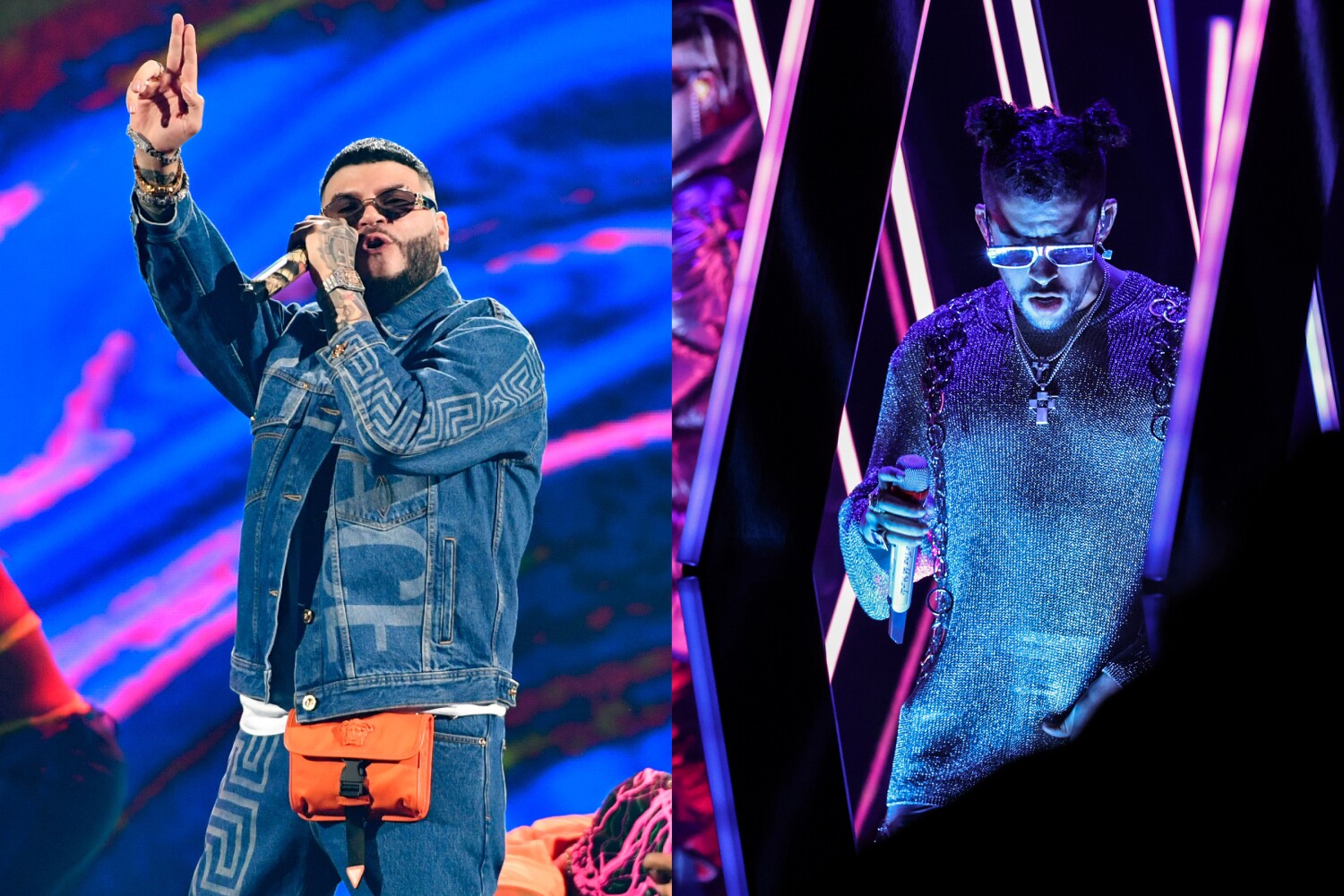Reggaeton dances to a new beat, as lilt of dembow gives way to thump of EDM
Decades before Farruko became one of Puerto Rico’s stand-out reggaeton MCs, the 30-year-old was a huge fan of Eurodance artists like Alice Deejay.
“That was my childhood,” confesses Farruko of the 1990s techno-pop sound that colored his latest studio album, “La 167,” and its breakthrough hit, the high-energy Latin house jam “Pepas.”
“Pepas” has topped Billboard’s Hot Latin Songs chart for seven weeks, and has remained affixed in the top 10 of the Spotify Global 50 chart. Dutch DJ Tiësto dropped a remix of “Pepas” last week, and the song’s streams show no signs of slowing down.
“I may have fans that only listen to reggaeton, but I’m a multifaceted artist. I want to evolve my music,” Farruko told The Times. “‘Pepas’ was an experiment, and it happened to work.”
Farruko is one of a growing number of artists who first built their audiences through reggaeton, before turning to the EDM world for inspiration. This past year has seen a sizable uptick in dance fusions climbing the Latin charts, among them Bad Bunny and Jhay Cortez’s “Dákiti,” Karol G’s country-disco track “Location” and Rauw Alejandro’s electro-pop hit “Todo De Ti.”
At the forefront of this emerging wave of electro-reggaeton is Colombian crossover star J Balvin. Since 2017, several of his songs have appeared on global dance/electronic charts, including collaborations with Major Lazer, David Guetta and Black Eyed Peas.
When Balvin recorded “In Da Getto,” his joint 2021 hit with Skrillex, he told Paper Magazine, “I didn’t have Latinos in mind.”
A callback to the 1994 house track, “In de Ghetto,” producers Skrillex and Tainy outfitted Balvin’s Spanish-language vision with pumped-up, jock-jam organs and an accelerated modulation of reggaeton’s core riddim known as dembow. The song is now certified gold in Italy and platinum in Spain.
Katalina Eccleston, co-producer of Spotify’s new podcast, “Loud: The History of Reggaeton,” suspects that the genre’s turn caters more toward marketing goals than creative ones. “There is a bottom line, and that’s expanding markets,” she says.
“They’re taking something that’s already popular” — EDM — “and seeing how much bigger their audience can grow.”
After once being criminalized in Puerto Rico, reggaeton finally endeared itself to the mainstream in the early 2000s. Tego Calderón won over fans across Latin America with his 2002 debut “El Abayarde,” while Daddy Yankee scored U.S. crossover appeal with 2004’s “Barrio Fino.” Don Omar’s 2006 LP, “King of Kings,” achieved a then-unprecedented feat for a reggaeton album by ranking No. 7 on the Billboard 200.
After this initial gold rush, many reggaeton artists went back to the drawing board, thirsty for fresh takes on their beloved homegrown sounds. This coincided with the global rise of EDM: By the late aughts, as house music and its variants permeated pop and R&B music in the United States, Mexican acts like 3Ball MTY developed the regional EDM fusion known as tribal guarachero, while genres like nu-cumbia and funk carioca rippled well beyond their origins in South America. Many of these sounds were interpolated into what’s now referred to as “global bass.”
In Puerto Rico, producers like DJ Blass and Tainy sought to transform reggaeton with the same techniques that artist-producers like Timbaland and Daft Punk had used to influence American pop. This sparked what Eccleston calls the era of “perreo galactico,” a house-driven subgenre of reggaeton in which veterans like Omar and Wisin y Yandel dabbled in electronic dance on songs like “Virtual Diva” and “Sexy Movimiento.”
Commercially, such experiments fizzled out by 2011, and, in the years leading up to the 2017 sensation “Despacito,” reggaeton struggled once more to attain industry recognition.
Now, the majority of top charting Latin songs are not just by reggaeton artists — they are EDM fusions.
“In the beginning, reggaeton was a fusion sound,” says Miami-based Luis J. Gonzalez, who produces under the moniker Mr. Nais Gai. He assisted in several tracks on “Vice Versa,” the latest album by emerging Puerto Rican star Rauw Alejandro. “Over time, any artist should want to innovate their genre.
“The bass is critical,” adds Gonzalez, who cites Deadmau5’s breakthrough electro-house album “4×4=12” as an influence. “Reggaeton and house each have their own style, but they share the same principle. What brings them together is that boom boom that makes you move.”
Puerto Rican hitmaker Jhay Cortez shared the same ethos in writing his latest album, “Timelezz,” on which Skrillex shares credits on the Latin electronica track, “En Mi Cuarto.”
“Anything that makes you dance can be universal,” said Cortez in a recent interview with The Times.
Does this shift to EDM mean that reggaeton may be experiencing a decline?
“Like EDM, reggaeton is global music at this point,” says Cortez. “It’s not going anywhere.”
For all the latest Entertainment News Click Here
For the latest news and updates, follow us on Google News.

